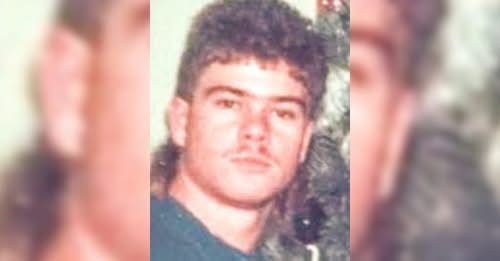DNA Breakthrough Identifies 10th Victim of Infamous Indiana Serial Killer Herb Baumeister as Daniel Thomas Halloran
WESTFIELD, Ind. (April 29, 2025) — Nearly three decades after the discovery of thousands of human remains at the property of suspected Indiana serial killer Herb Baumeister, authorities have made another breakthrough in identifying a victim. On Tuesday, Hamilton County Coroner Jeff Jellison announced that remains recovered in 1996 at Baumeister’s former residence—Fox Hollow Farm—have been positively identified as belonging to Daniel Thomas Halloran, born in 1972.
This latest identification marks the tenth confirmed victim connected to the Baumeister case, which remains one of the most gruesome and chilling investigations in Indiana’s history. Although Halloran’s exact date of death remains unknown, investigators believe he was murdered sometime in the late 1980s or early 1990s—during the same period Baumeister is suspected to have lured and killed multiple young men, many of whom were members of Indiana’s LGBTQ+ community.
The long-awaited breakthrough was made possible through advanced forensic testing and genetic genealogy conducted by Othram, Inc., a company specializing in DNA analysis to resolve cold cases. According to Coroner Jellison, Halloran’s identification is the result of years of persistent work and technological advancement, especially as investigators continue to sort through approximately 10,000 human bone fragments that were found on the property after Baumeister’s crimes came to light.
“This is a significant development in our ongoing efforts to provide answers to the families of those who went missing,” said Jellison. “We are grateful for the expertise of Othram and the advances in forensic science that made this possible.”
A Legacy of Horror at Fox Hollow Farm
The horror at Fox Hollow Farm, a once-quiet estate in Westfield, began to unravel in 1996 when investigators, searching for missing persons in the Indianapolis area, were led to Baumeister’s home. What they found was staggering—thousands of bone fragments scattered across the wooded areas behind his house, later determined to belong to multiple victims.
Before authorities could arrest him, Herb Baumeister fled to Canada, where he died by suicide, leaving behind unanswered questions and decades of trauma for the families of his suspected victims.
Police believe Baumeister targeted gay men at local bars and clubs in the 1980s and 1990s, inviting them back to his residence under false pretenses. There, he allegedly murdered them and disposed of their remains on the property. Though he was never formally charged due to his suicide, the physical evidence found on his estate has left little doubt as to the scale of his crimes.
A Renewed Effort for Justice
Since 2022, the Hamilton County Coroner’s Office, working with national and international partners, has renewed efforts to identify the victims, using modern forensic tools unavailable during the original investigation. The University of Indianapolis’ archaeology department has played a crucial role in cataloging and preserving the remains, while Indiana State Police forensic labs continue conducting DNA testing.
In October 2023, the remains of Allen Livingston, a young man who disappeared in Indianapolis in 1993, were positively identified as another Baumeister victim. His family’s relentless search helped breathe new life into the investigation and inspire others to come forward.
Authorities are urging anyone who believes a missing loved one may have been one of Baumeister’s victims to contact the Hamilton County Coroner’s Office at (317) 770-4415. Families can provide DNA samples to assist in the identification process, with the goal of bringing closure to decades-old wounds.
As of now, eight other sets of remains recovered at Fox Hollow Farm have not yet been identified. But with continued scientific advancements and cooperation from the public, investigators remain hopeful that more families will one day receive the long-overdue answers they deserve.
“Every new identification is more than just a scientific accomplishment,” Jellison said. “It’s a moment of peace for a family that has lived in the shadows of uncertainty. Our mission continues.”

